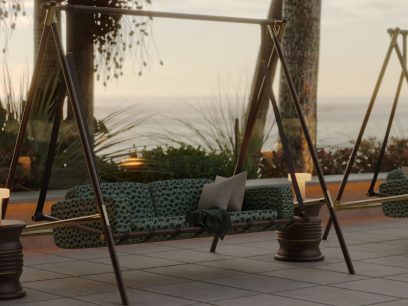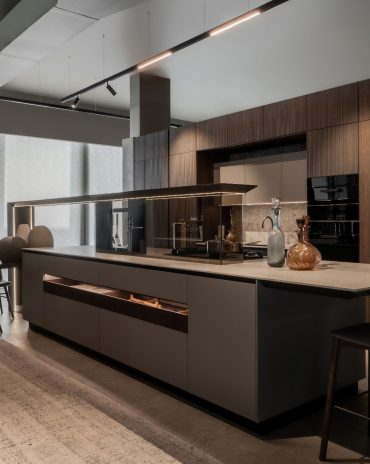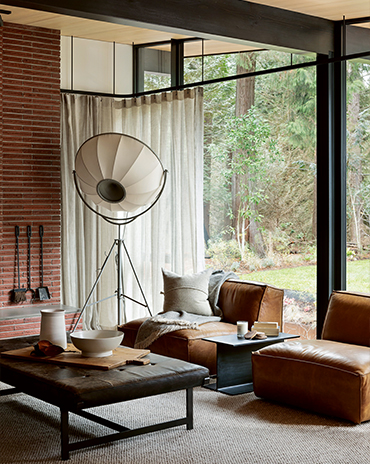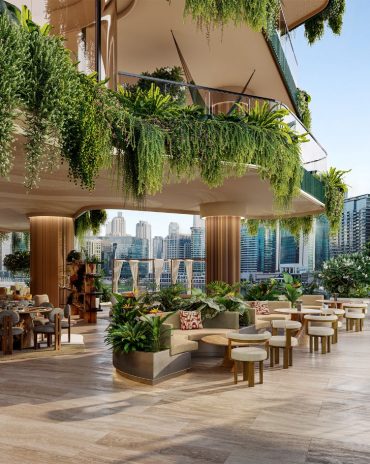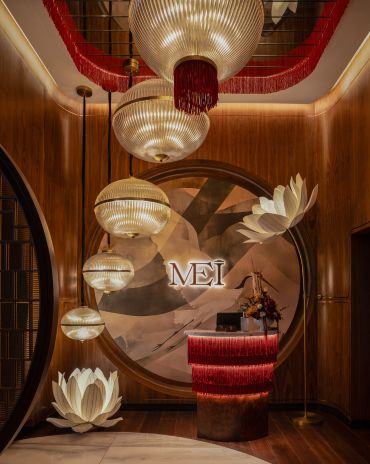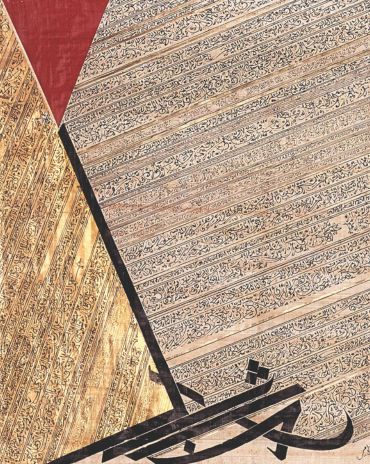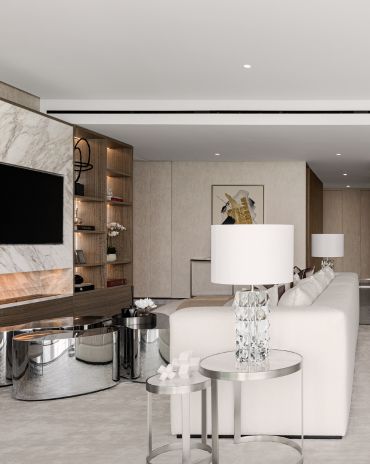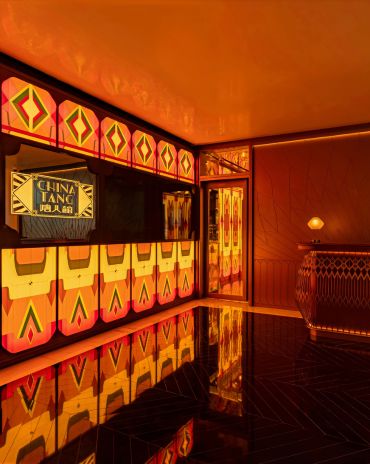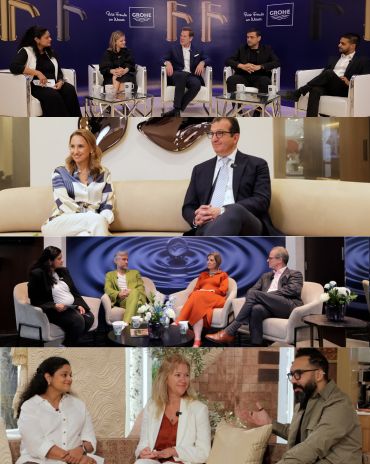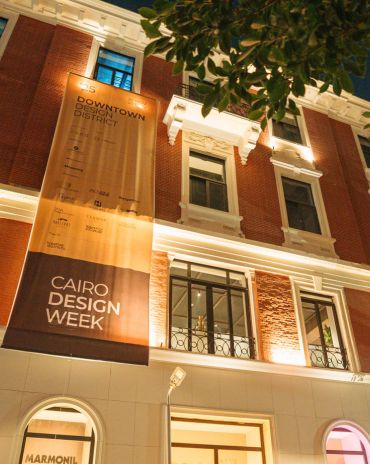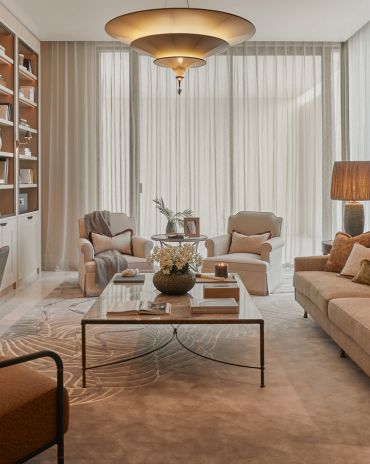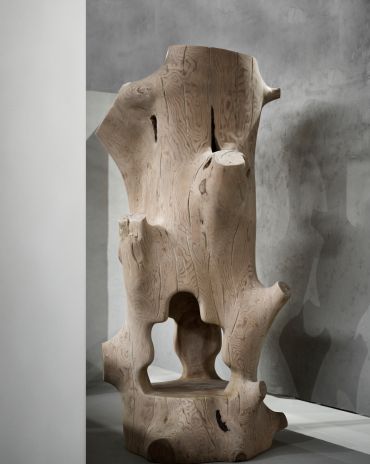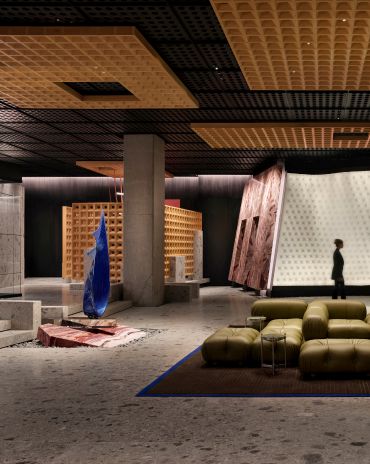Copyright © 2025 Motivate Media Group. All rights reserved.
The Spaces that Shape Us
We explore how certain spaces influence and shape human behaviour, creativity and cultural identity
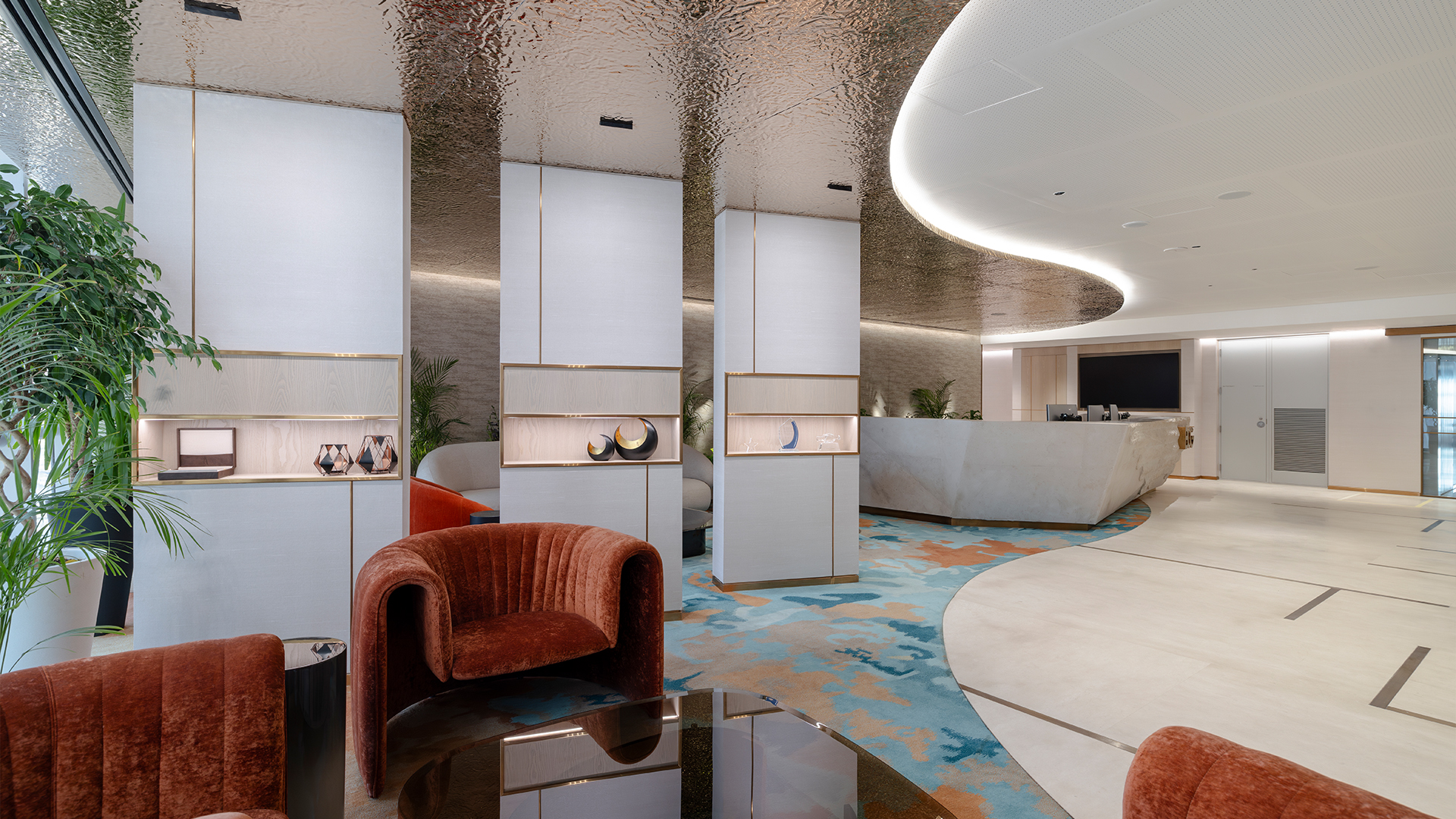
It’s no secret that spaces are more than just structures; they are the silent narrators of our experiences, influencing how we move, interact and feel. From urban streetscapes to cultural hubs and community-driven designs, the way we shape our surroundings directly impacts how we engage with the world. We speak to architects on how they would approach designing spaces that foster inclusivity, connection and wellbeing.
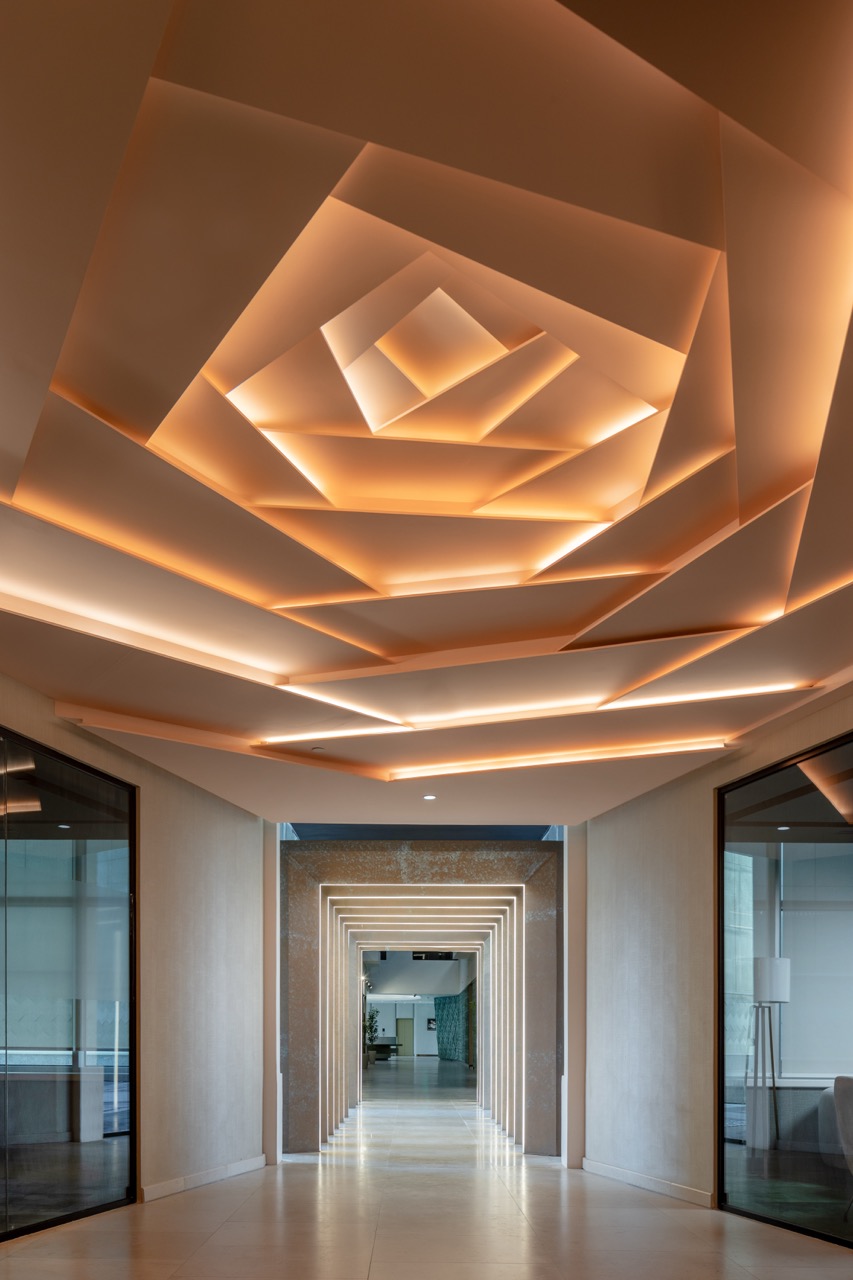
Ministry of Tourism headquarters in Riyadh, KSA by Allen Architecture Interiors Design (AAID)
Designing for Interaction and Wellbeing
E+A Design Studio’s work on the Satwa Streets urban beautification project in Dubai showcases the powerful role of design in influencing how people interact with their surroundings. By introducing smaller and inviting spaces within the bustling street fabric, including seating interventions and greenery, E+A Design Studio’s founder Evgeniia Molchanova and her team created a sense of shelter and protection. “It’s a reminder of how small design interventions can profoundly influence how people experience and interact with their surroundings,” she says.
Dara John Towhidi, founder of DesignTomorrow, cites his firm’s Urban Gateway District project which was recently exhibited at the RIBA in London as a good example of urban planning done well. The approach integrates pedestrian-friendly pathways, community spaces and a mix of residential, retail and office areas to encourage interaction and promote a sense of community. “By prioritising pedestrian-friendly pathways and micro-mobility, we encourage residents and visitors to explore the area on foot or by bicycle, promoting health and social interaction. The integration internal streets lined with community retail, co-working spaces and residential lobbies creates a dynamic environment where people can naturally gather and connect,” he notes.
For Mansi Tewari, Associate Director at Allen Architecture Interiors Design, designing spaces that respond to their cultural and social context is a priority. “Spaces that tell a story, evoke emotions and create a sense of belonging endure beyond trends. Sustainability and adaptability are also crucial – designing with longevity in mind ensures relevance over time,” she shares. “A lasting space is built on a strong concept rooted in human behaviour and cultural relevance, rather than passing aesthetics. Timeless materials, modular design for flexibility and a deep understanding of how people interact with space are key.”
Evolving Spaces as Catalysts for Cultural and Social Change
As cities become more diverse and digitally connected, public spaces must adapt to encourage inclusivity and interaction. Molchanova points out that successful spaces prioritise cultural awareness and the flexibility to cater to different groups’ needs. She cites Potsdamer Platz in Berlin as an example – a space that, after the fall of the Berlin Wall, became a symbol of healing, transformation and collective memory.
Towhidi also advocates for human-centric designs that prioritise walkability and social cohesion. He cites The High Line in New York as an example, which transformed an abandoned railway into a vibrant urban park, blending nature, art and social life while setting a global precedent for adaptive reuse. “Similarly, in the UAE, Alserkal Avenue in Dubai has evolved from an industrial warehouse district into a dynamic cultural hub, integrating art, co-working and public gathering spaces,” he shares.
Tewari cites museums, restaurants and workplaces as spaces that have evolved over time in society while staying true to their key purposes. “The use of digital storytelling, interactive exhibits, AI-powered guides and cutting-edge technology to create experiences, and ease of work: all have allowed spaces to evolve to meet new needs yet keep the essence,” she shares. Towhidi is now working on a new library project that reflects this change by blending its functions as cultural cornerstone and learning hub with now also being a space for community engagement and social interaction. “By merging the richness of traditional libraries with contemporary flexibility, this project will serve as a catalyst for education, creativity and civic engagement – ensuring the library remains a cornerstone of cultural and intellectual life for future generations,” he shares.
Reclaiming Human-Centric Design
“We are fascinated with how cities work and are often disappointed with how much of contemporary urban design has last lost touch with the lessons of the past,” shares Towhidi. “Traditional urbanism, from the Middle East to Europe to Asia, featured compact, mixed-use neighbourhoods designed for walkability, featuring shaded courtyards and vibrant streets blending commerce, residence and public life. Narrow, winding streets fostered social cohesion, safety and spontaneous encounters. Modern planning often prioritises efficiency with large roads, oversized plots and rigid zoning, sacrificing liveability. Reviving these traditional principles can create more adaptable, inclusive and resilient environments.”
The Digital Age: Balancing Virtual and Physical Spaces
While the digital age has radically changed how we interact with the world, it has not diminished the importance of physical space. Molchanova reflects on how urban design must counteract the growing detachment from tangible experiences, urging designers to create spaces that foster spontaneous, tactile and sensory engagement. “Technology is an incredible enabler, but the fundamental human need for shared experiences must remain at the core of urban design,” she says.
Towhidi notes that the digital experience, often mediated through screens, risks reducing our connection with places to something merely visual. As such, designers must create environments that encourage deeper, meaningful interactions – spaces that offer experiences beyond the digital lens. “True engagement with space goes beyond what we see,” he observes, advocating for designs that evoke emotion and a sense of place.
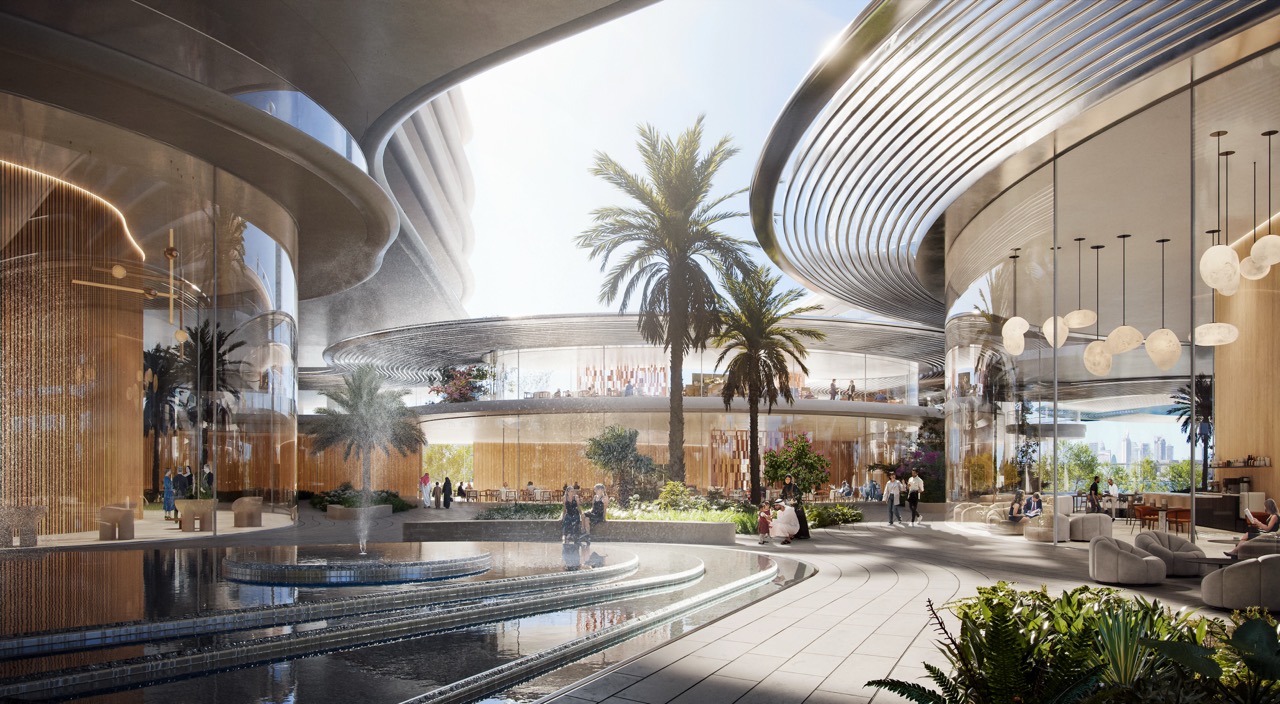
Project D8 – a luxury waterfront community by DesignTomorrow
The Future of Design: A Synthesis of Innovation and Humanity
As the world moves toward smarter cities and more sustainable communities, all three architects believe that the future of urban spaces must prioritise human needs. Molchanova envisions cities where well-being, nature and technology coexist harmoniously, offering spaces where people thrive. “Future spaces will likely be a fusion of multiple typologies, combining technology, wellbeing and sustainability,” she says. Tewari shares a similar vision. “Spaces that allow for seamless integration with technology, nature and wellness would be ideal, to bring back some of the fundamentals of work-life harmony and working and living as teams rather than isolated individuals,” she shares.
Towhidi foresees a focus on hybrid workspaces, community-driven projects and sustainable design that reflect the growing desire to merge technology with human-centric principles. For him, smart cities and sustainable communities are not merely about efficiency; they must be about creating spaces where people feel a genuine connection to their environment and each other.
As architects continue to shape the world’s public spaces a focus on human interaction, inclusivity and a profound respect for history can help ensure that cities remain vibrant, resilient and deeply connected to the people they serve.
Photography by Roberto Conte
The Latest
Studio 971 Relaunches Its Sheikh Zayed Showroom
The showroom reopens as a refined, contemporary destination celebrating Italian craftsmanship, innovation, and timeless design.
Making Space
This book reclaims the narrative of women in interior design
How Eywa’s design execution is both challenging and exceptional
Mihir Sanganee, Chief Strategy Officer and Co-Founder at Designsmith shares the journey behind shaping the interior fitout of this regenerative design project
Design Take: MEI by 4SPACE
Where heritage meets modern design.
The Choreographer of Letters
Taking place at the Bassam Freiha Art Foundation until 25 January 2026, this landmark exhibition features Nja Mahdaoui, one of the most influential figures in Arab modern art
A Home Away from Home
This home, designed by Blush International at the Atlantis The Royal Residences, perfectly balances practicality and beauty
Design Take: China Tang Dubai
Heritage aesthetics redefined through scale, texture, and vision.
Dubai Design Week: A Retrospective
The identity team were actively involved in Dubai Design Week and Downtown Design, capturing collaborations and taking part in key dialogues with the industry. Here’s an overview.
Highlights of Cairo Design Week 2025
Art, architecture, and culture shaped up this year's Cairo Design Week.
A Modern Haven
Sophie Paterson Interiors brings a refined, contemporary sensibility to a family home in Oman, blending soft luxury with subtle nods to local heritage
Past Reveals Future
Maison&Objet Paris returns from 15 to 19 January 2026 under the banner of excellence and savoir-faire
Sensory Design
Designed by Wangan Studio, this avant-garde space, dedicated to care, feels like a contemporary art gallery

